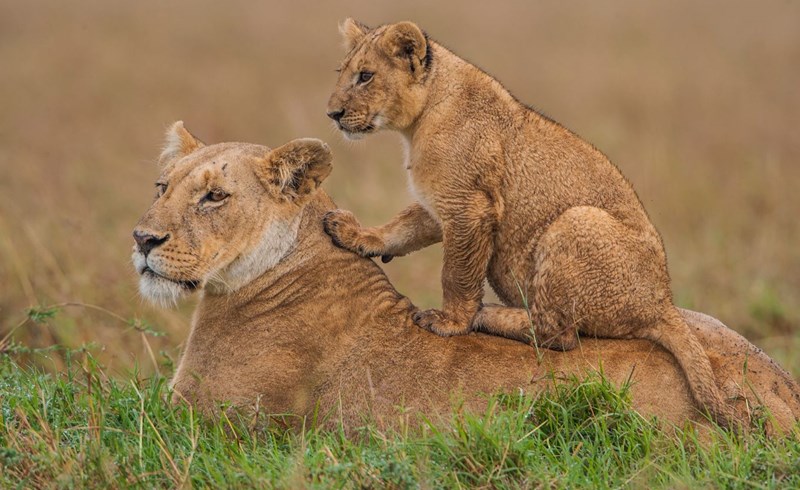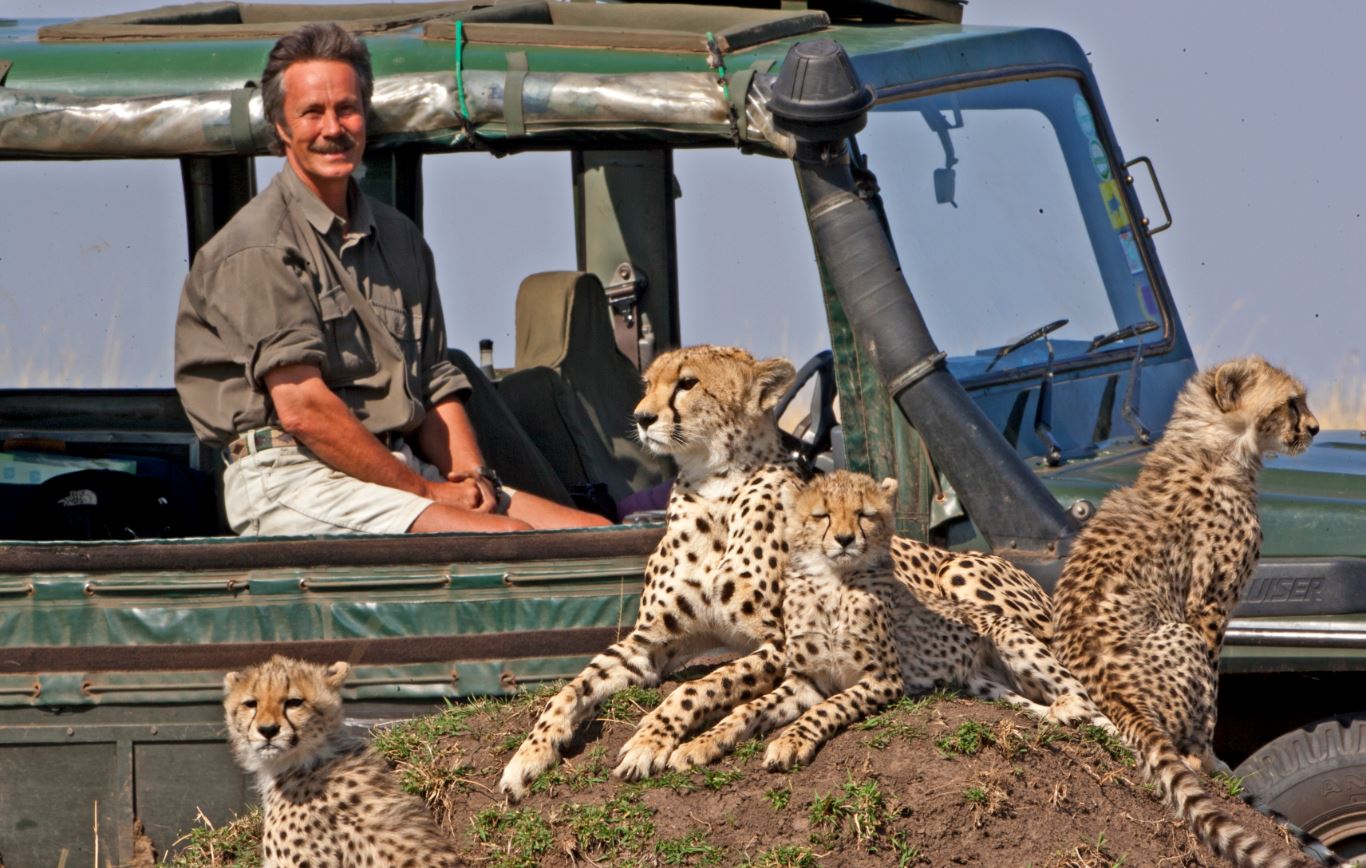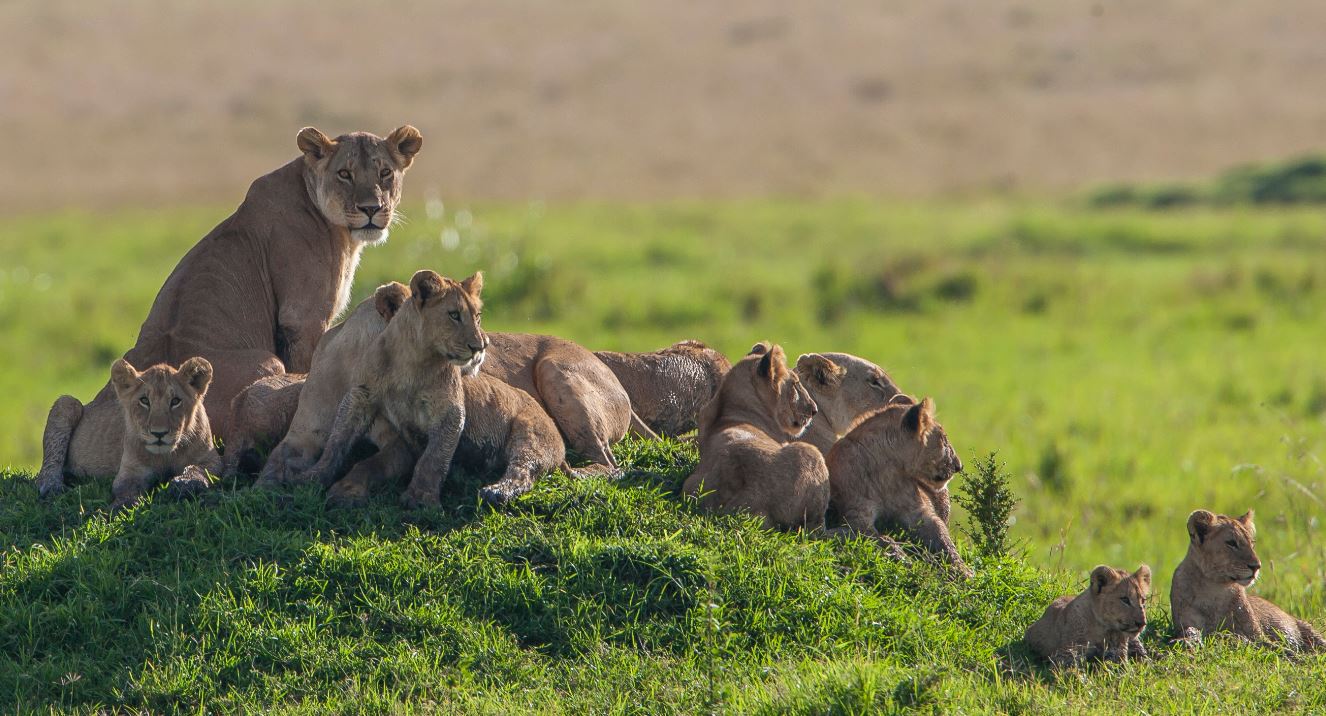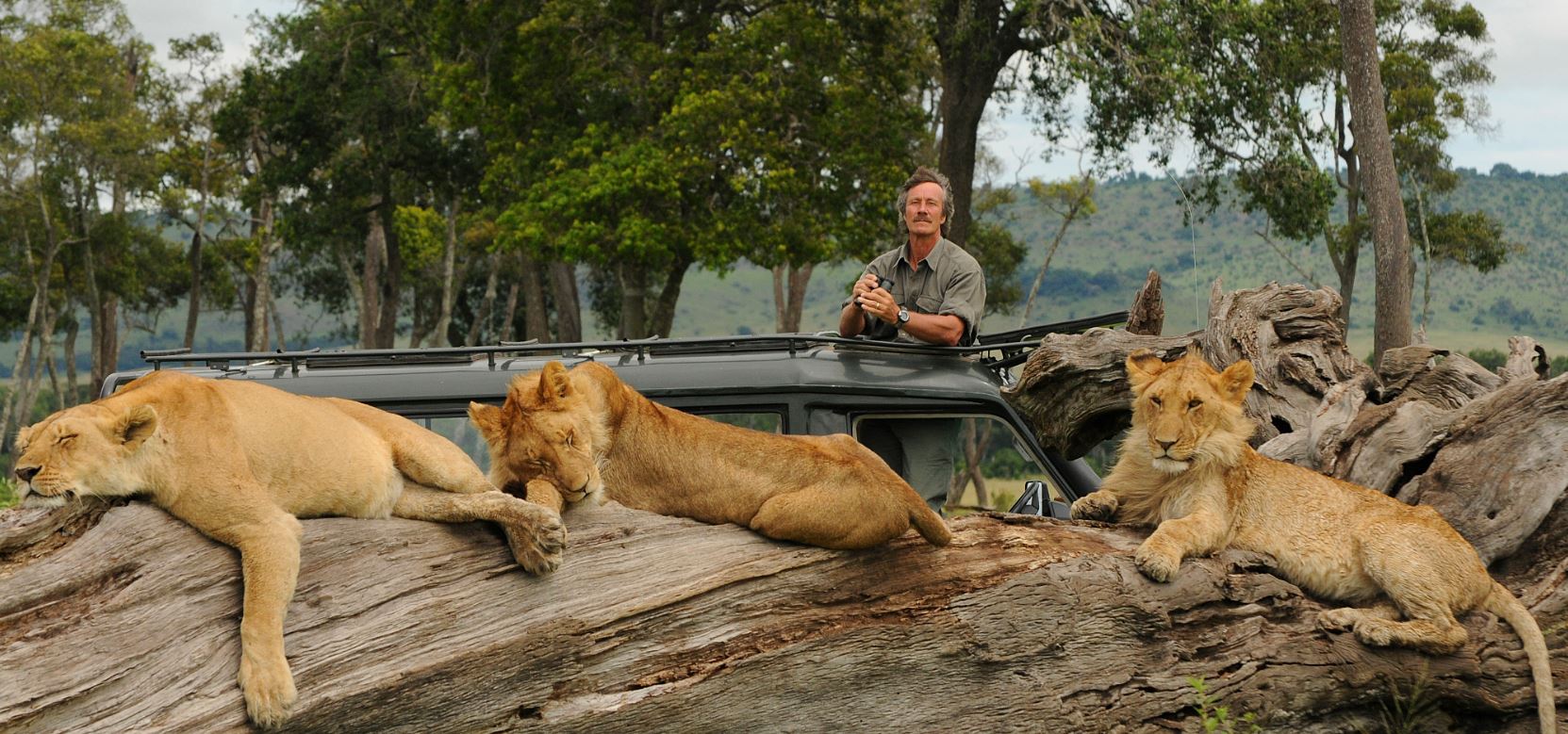
When the news broke that Cecil the lion had been killed by recreational big game hunter Walter Palmer, there was a worldwide outcry.
Politicians and celebrities waded into the argument, and Palmer and his wife went into hiding. Talk-show host Jimmy Kimmel helped raise $150,000 in donations in less than 24 hours to support a well-known wildlife charity.
It became clear that the world loves big cats, and they’re hugely precious to us - so how can we help protect them in their natural habitat, and prevent them being exploited in other countries?
Jonathan and Angela Scott are probably best-known as the presenters and still photographers for Big Cat Diary, but they’re also conservationists and authors who have been working with big cats in Africa for over 40 years. Here’s their take on what happened to Cecil - and how tourists can help big cats.

Are we ever able to really know how many big cats are living in the wild? Are their numbers dwindling?
All of us in the conservation business know that numbers can be misleading. What we do know is that lions have lost over 70% of their natural range due to the burgeoning human population.
Lions are probably easiest to count - they’re more visible and live in territories, so drivers and guides get to know the members of different prides. Cheetahs can be harder to spot and range widely, while the leopard is the most difficult of all as they are shy and secretive.
Using photographs and spot markings is the most accurate way of trying to establish numbers. The pattern of whisker spots on a lion’s muzzle is like a human fingerprint - it doesn’t change. And the coat markings and patterns of spots on cheetahs and leopards' faces help to identify them - along with their tail markings.
‘Camera traps’ have really helped too - especially for estimating numbers of secretive cats like tigers and jaguars in forested habitats - they're much better than relying on pug marks.
There’s no question that big cat populations are dwindling across the globe; its all about pressure from humans and their livestock and agriculture - and poaching for meat, skins and body parts. The African cheetah is listed as endangered; estimates range from 7,500 to 10,000 in Africa, plus 80 Asiatic cheetahs in Iran.

We believe that there are no more than 25,000 to 30,000 lions left in Africa - yet they were once the most widespread large mammal on earth after humans. Leopards are the most numerous and wide ranging worldwide. They’re solitary, secretive and highly adaptable - they can live close to people and remain unnoticed as long as they don’t take livestock.
Extinction is not the issue. We have to retain hope. When people say there will be no elephants or lions left in 10 or 20 years time if things continue like this, I'm sceptical. But I believe that although numbers will decline further, we will step back from the precipice - that a fragment of what we have now will remain. You sometimes sense a turning point within peoples’ consciousness, as we witnessed when Cecil the lion was killed.
Lions are such iconic creatures and hugely popular with the general public. People want to help - our connection to our wild heritage is buried deep in all of us.

The hunting and killing of Cecil the lion has recently sparked outrage. Is there a possibility that this practice can and will be outlawed?
I’m a conservationist and I’ve always been under pressure to accept regulated hunting as a way of protecting wildlife and wild places regardless of how abhorrent it seems to Angie and myself; ironically, culling some animals can help the rest of the species flourish. But only when it is managed properly with strict enforcement. Well-regulated hunting - where a sustainable number of animals are killed based on a deep understanding of their biology - can protect wilderness areas and the animals that live there where wildlife based tourism is impossible.
But too often hunters exceed sustainable quotas or kill animals that are still in prime breeding condition. I am not convinced about how much money really filters back to the people living alongside wildlife, those bearing the brunt of damage to life and livelihoods from conflict with wild animals.

However, this isn’t what happened with Cecil. The mere thought of someone going out to kill a creature for their own pleasure is sickening. Admittedly there is a deep-rooted connection with humans to hunting - we’ve always done it to survive; hunting for food is
one thing but this was gratuitous in the extreme. Simply outrageous. I watched an American comedian on TV make fun of the hunter who killed Cecil (Walter Palmer), chiding him that there was a little blue pill he could take if he wanted to feel more ‘manly’
rather than kill a lion.
Ironically, Palmer has done lions a favour; he’s raised awareness and inadvertently boosted conservation efforts.
Cecil was 13 years old - that is old by lion standards. Many males never reach 10 years of age and 50% of cubs die - that is how tough it is being a wild lion. To survive life in the pride, struggle through independence as a nomad, then to take over a pride of your
own and breed is a huge challenge. Cecil was a warrior - he deserved better than to die like this.
Which countries are best-known for having depleted numbers of big cats?
I wouldn’t like to single out an individual country, but the West African lion is under a lot of pressure throughout West and Central Africa. Its habitat is disappearing along with its natural prey. The bushmeat trade has wiped out huge numbers of wild animals with wire snares, spears and guns. Lions sometimes get caught up in wire snares and poachers and livestock owners sometimes poison a carcass to kill off predators. It is the same story throughout Africa - loss of habitat, loss of natural prey, conflict with livestock, poaching for skins and body parts, excessive trophy hunting. Lions and humans want the same things - real estate - a place to live and breed, somewhere they can find sufficient food, shelter and a safe place to raise their young. The stakes are so high
these days; there can only be one winner - man!
However, there are some excellent projects in East Africa helping communities to coexist peacefully with big cats, such as Lion Guardians and Living with Lions. They encourage livestock owners to strengthen the gates and fences of their livestock bomas rather than simply retaliate by indiscriminately killing predators - the use of poison is particularly worrying.
These projects are also sensitive the community's needs, and help them find out about the way the predators operate in their area and the best ways of avoiding conflict from season to season.
Angie and I are ambassadors for the Kenya Wildlife Trust’s Mara Lion Project and Mara Cheetah Project. These projects are trying to give us a better idea of just how many lions and cheetahs live in and around the Masai Mara Reserve, identifying the greatest threats to their continued survival from the impact of poorly regulated tourism and illegal grazing by livestock within the Reserve - particularly at night when lions and leopards and hyenas are most active and the chances of conflict are greatest.
Should big cats ever be reintroduced back into the wild? How successful does reintroduction tend to be?
In general we are very cautious about reintroduction - it is a highly complex and expensive operation with lots of pitfalls. Lions and leopards are very territorial so introducing big cats from other areas can be very difficult - they are at a disadvantage as they do not know the habitat. The resident territory holders will make life very tough for the newcomers, plus they may not have resistance to the local diseases.
However, there have been some successful introductions in to areas where the predators had been eradicated - such as cattle ranches being converted to game reserves.

Angie and I are not big fans of the 'Walking with Lions' concept where visitors have close up encounters with semi-tame lions. We would rather see the money going to projects supporting wild lions. Given space, lions quickly increase in numbers - their gestation period is only 3.5 months. In South Africa, there’s been an explosion in Lion Parks offering petting experiences where people can touch or cuddle cubs - and yes, they're great photo opportunities. After a few months, these cute cubs are too big to safely mix with people; some even end up as fodder for the ‘canned hunting’ industry and are shot in large fenced enclosures.
These semi tame lions are definitely not suitable for reintroduction - they're a disaster waiting to happen as their natural fearfulness of humans has been diminished. It is not fair on them or on people.
Tourists are often upset by seeing big cats in trouble when they're abroad - either in tiny enclosures in zoos, or being forced to perform for tourists or drugged, so they can be petted. What can they do to make a difference?
Having worked with big cats all my adult life, I can understand why people get excited by these experiences, but keeping big cats as domestic pets isn’t what we should be doing. They should be in the wild. They are more about commercial interests than conservation.
However, these kinds of operations have sometimes been around for a long time and generate a fair bit of money for local people. There will always be people with the right connections behind these organisations who can ensure they’re kept open, and the tourists keep coming. In Thailand, there is a place where you can have a tiger experience; Buddhist monks look after captive tigers and visitors can walk among the tigers - for a fee. It is demeaning to the tigers.
Our advice to tourists who see something they don’t like is to photograph it and send the images to their tour operator who organized your trip, the park authorities and proactive conservation groups such as the Born Free Foundation. They can then advise you on who to speak to next or take up your complaint. They are great at advocacy as are the East African Wildlife Society, who produce an excellent magazine called Swara that we regularly contribute to - we would love everyone to sign up.
Are you in favour of safaris, as reputable safaris will let tourists see big cats in the wild?
I believe that safaris are essential; especially for places like Kenya. Kenya’s tourism is a non-consumptive form of wildlife utilisation; wildlife isn’t being harmed by safaris as long as drivers and guides respect the rules. There’s no trophy hunting or game ranching - it was banned in 1977.
Safaris raise huge sums of money each year for Kenya - it is in our top four foreign exchange earners, along with tea, coffee and horticulture (flowers and market produce). This can be ploughed back into conserving wilderness and in encouraging local communities to help protect wildlife and value it, as both a commodity, and as part of their natural heritage.
How can people be responsible tourists when it comes to seeing big cats on safari?
Firstly, don’t encourage your driver or guide to break the rules - no off-road driving where not permitted! In 1975, I was on an overland trip through Africa and new to safaris. We begged our driver to edge closer to a leopard lying at the base of a tree in long grass in the Serengeti; we were desperate for a better view. He refused; we had a Ranger with us and he explained that breaking the rules could disturb the animals and cause him to lose his job as the Warden brokered no dissent. In the best camps and lodges the rules will be clearly explained - either verbally, or there’ll be leaflets and posters dotted around. You should always have a briefing on how to behave before your first game drive.

Secondly, don’t make a lot of noise. Don’t turn your safari experience into a circus - don’t sit or stand up on the roof of your vehicle.
The big cats are habituated to people in vehicles - but not to people on foot or visibly human. This can frighten or provoke a lion or a leopard in to either fleeing or charging the vehicle. Mothers with small cubs can be particularly nervous - give them space and if they seem disturbed move away. Don’t let your desire to get great photographs stop you from enjoying the wonder of being in the presence of these majestic big cats. They deserve our respect.
Image credit: Angela Scott
← Discover the truth about sharks and feel safer in the water this summer